This summer, the transfer strategy of Mikel Arteta at Arsenal can be considered successful with the club securing the signatures of Fabio Vieira, Gabriel Jesus and Oleksandr Zinchenko. The manager filled the gaps in a few very important positions in his aim to make the team more competitive in the 2022/23 season and finally show the potential of his vision and the style of play he wants to impose.
Looking at three of the new additions, we can see that the club focused on bringing in versatile players who can take over different functions. All of them are players who are comfortable moving out of their positions and supporting their teammates’ movement, which is expected to help the team in retaining possession and increasing their attacking efficiency.
Zinchenko’s arrival brought a few questions on the agenda, with everyone wondering how Arteta will set his team up and what will be the Ukrainian’s role in it. We’ve seen the former Manchester City player in two roles in his career – he is well-known as a left-back for Pep Guardiola’s team, but he is used in his natural central midfield position at international level for Ukraine.
The Gunners, though, lack depth in both positions and cannot achieve consistency due to constant injuries and poor form, which makes it difficult to figure out where Arteta plans on using Zinchenko.
In this scout report, we use tactical analysis to examine the managers’ options and where the Ukrainian could fit better into his tactics.
What can Zinchenko offer as a left-back?
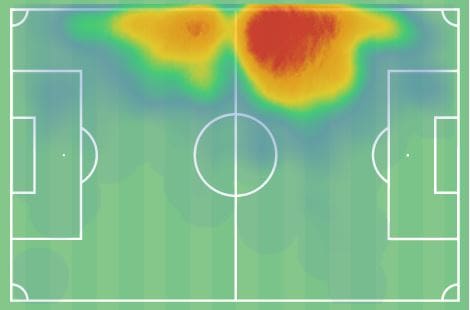
Zinchenko’s versatility makes him a successful left-back who can split his responsibilities well and contribute effectively both in and out of possession. That’s the position he was most used in by Pep Guardiola and the one that developed his tactical intelligence even further.
His understanding of the game and high awareness is actually the quality he is most valued for. That’s because they often result in a successful judgement of the situation and help him in finding solutions for his team, especially in attack. Combining well with his teammates, through a high pass frequency and using his body orientation to both receive and send the ball into quality areas affect the ball progression and increase the team’s chances in front of goal.
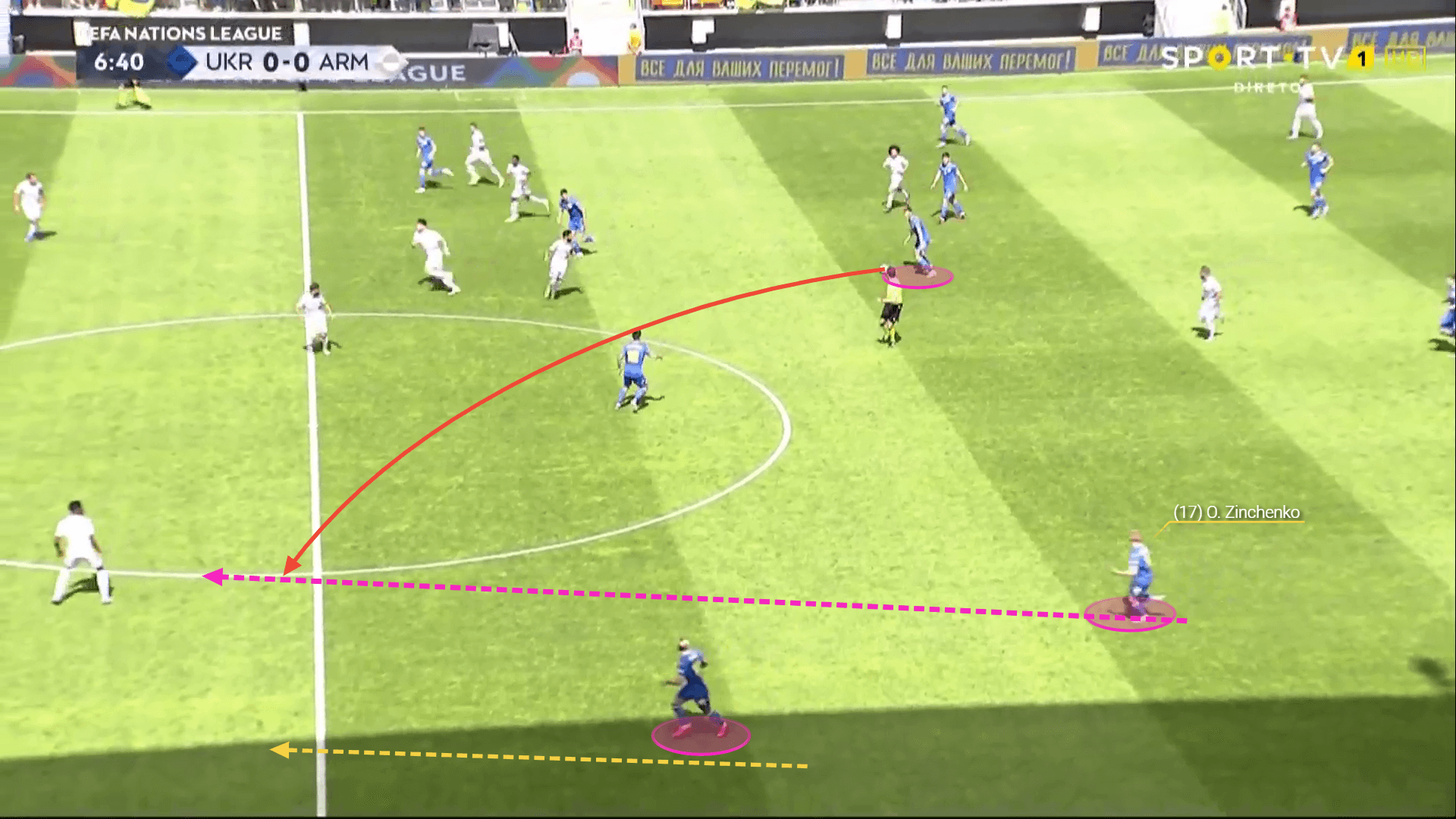
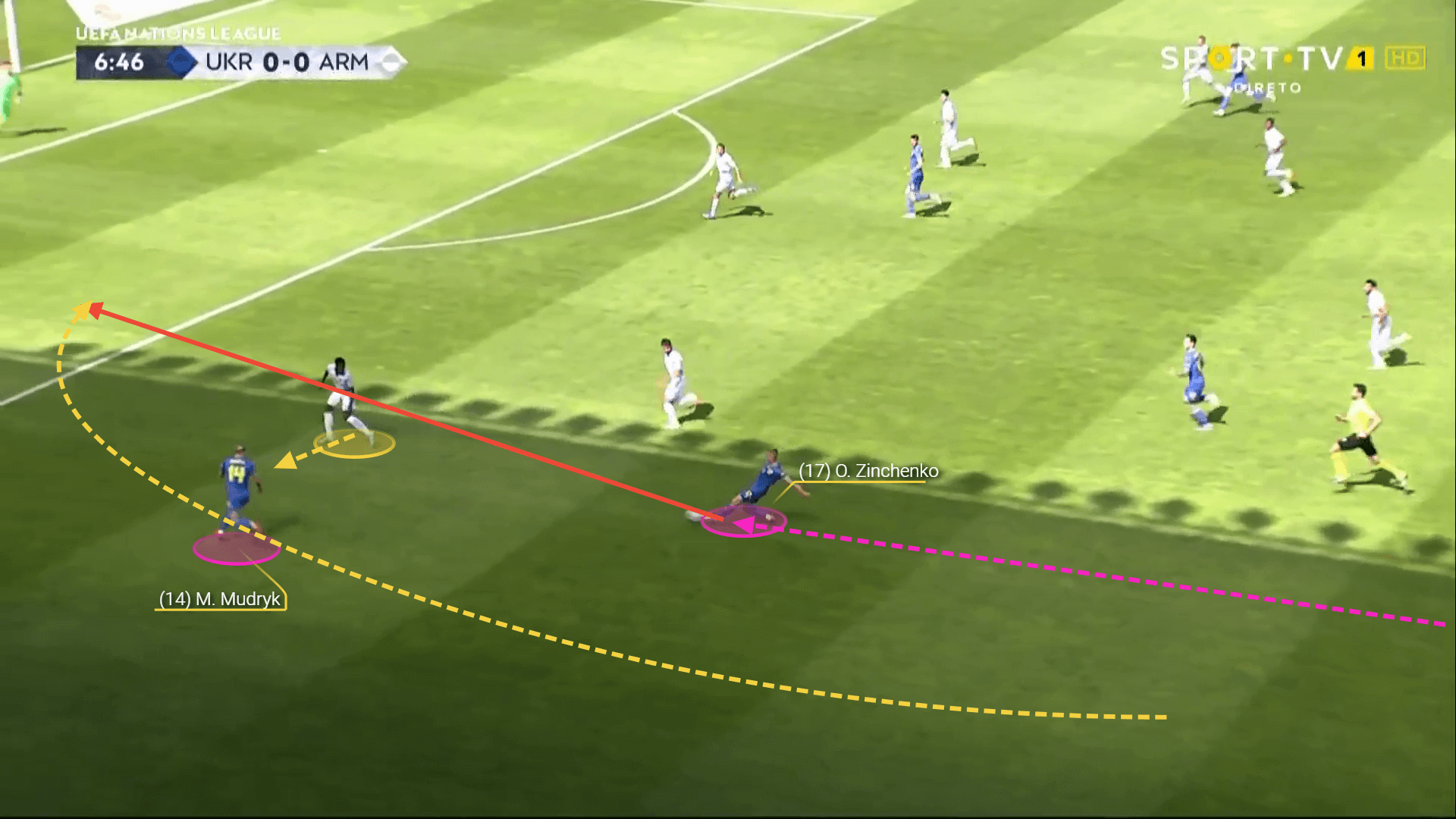
The Ukrainian’s passing abilities are key for bypassing the opposition’s pressing and disturbing defences. Last season, he averaged 77.55 passes per 90 in the Premier League and ended the campaign with the highest number per game among the division’s left-backs and left-wingbacks. His successful distribution would help the team not only to gain control over the wide areas but to retain possession centrally as well. With his 89.3% pass accuracy, he was the left-back with the highest success rate, which underlines his importance for retaining possession and initiating attacking movements.
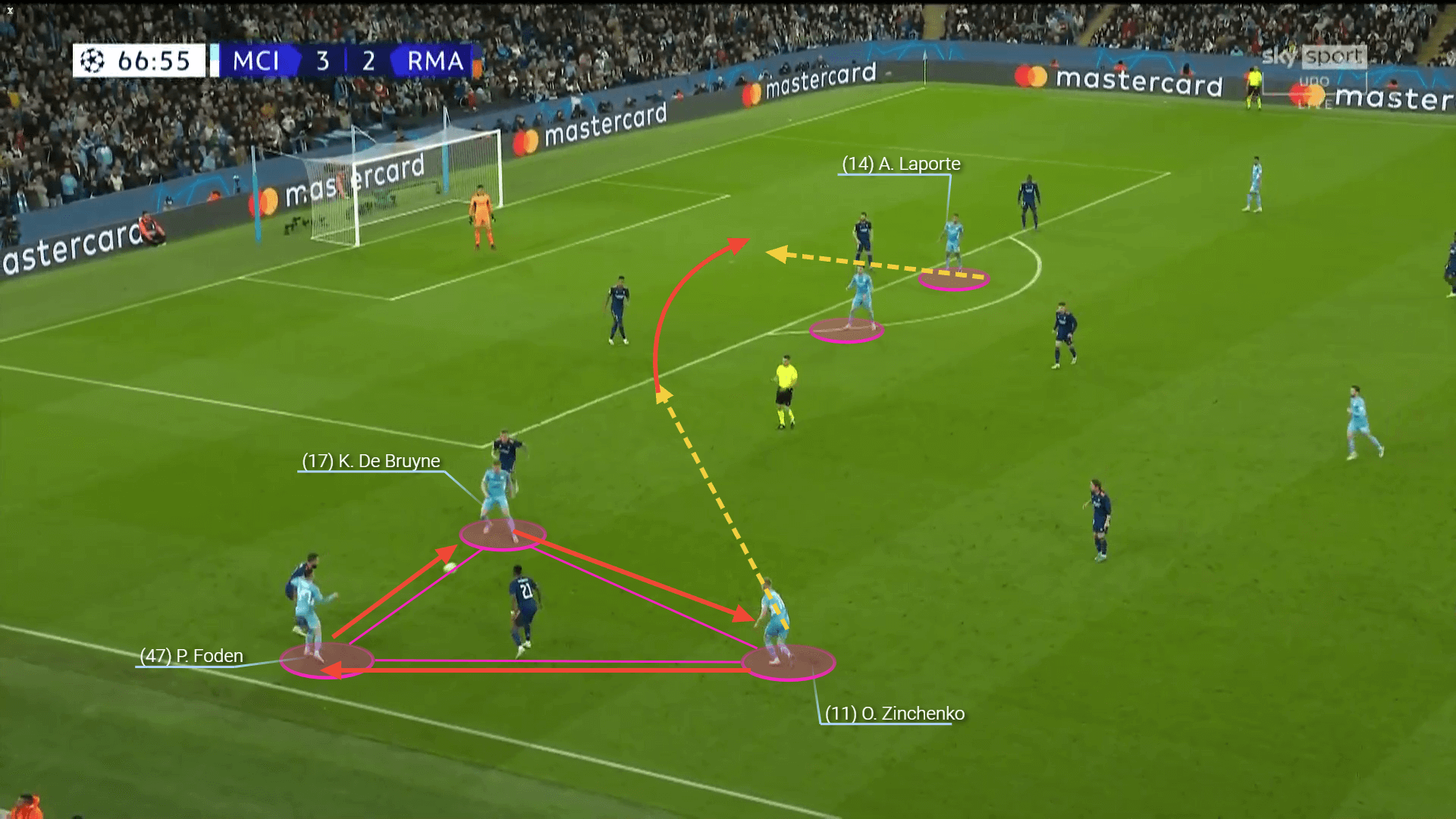
He could also be a key creator for his team as his successful crossing attempts often result in creating chances for his teammates. What increases his value, though, is the fact that he doesn’t limit his movement only to wide areas. Zinchenko likes to cut inside and occupy the half-spaces as well. That’s where his spatial awareness and strong decision-making often result in finding pockets for his teammates to receive the ball in.
He is very reliable due to his ability to hold on to the ball, which is often demonstrated by his progressive runs (2.63 per 90) and by how frequently he tends to carry the ball to the final third.
He supports the team out of possession equally well not only by dropping back in a timely manner but also by initiating the press and recovering the ball in the advanced areas quite frequently. As a result, 41.9% of his ball recovery efforts were completed in the opposition’s half.
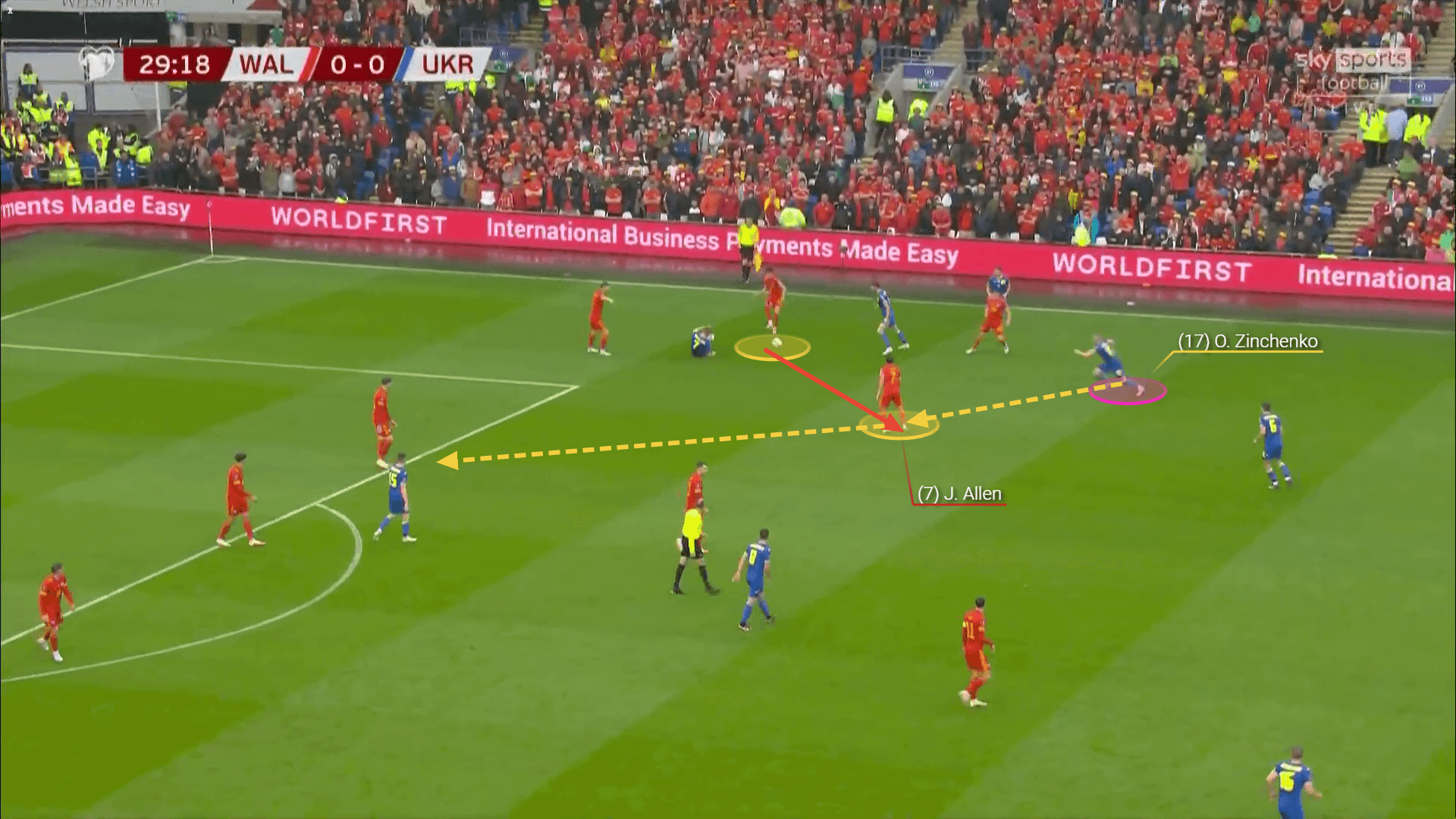
While he has positive numbers in terms of ground duels, one of his most impressive strengths is his aerial presence. Despite his 175cm of height, he is very successful in his aerial duels and often wins possession in key areas, allowing the team more time on the ball and giving them the chance to attack.
How can he contribute as a central midfielder?
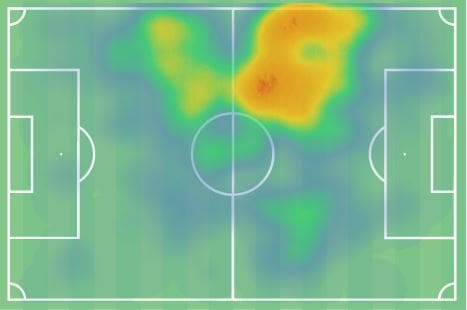
The 25-year-old’s qualities make him suitable for other roles on the pitch as well. That’s why you could see him deployed in central midfield on an international level with Ukraine. That position allows him to contribute to the build-up play centrally and uses his exceptional passing to break lines and support the ball progression. It also gives him the opportunity to occupy the half-spaces more frequently and rely on his creativity to support the team’s attacking actions.
He can successfully orchestrate play and initiate attacking movements thanks to his tactical intelligence. His positioning and passing complement his teammates’ movements, while his frequent progressive runs make him much more valuable in the attack. When playing as a central midfielder, he is much more active in the final third, averaging 2.4 touches in the penalty areas and even shooting 1.92 times per game. He even takes on the opposing players more freely, averaging 3 dribbles per 90.
He focuses more on providing through balls and setting his teammates up from deep, rather than supplying the ball through crossing, as he did with City.
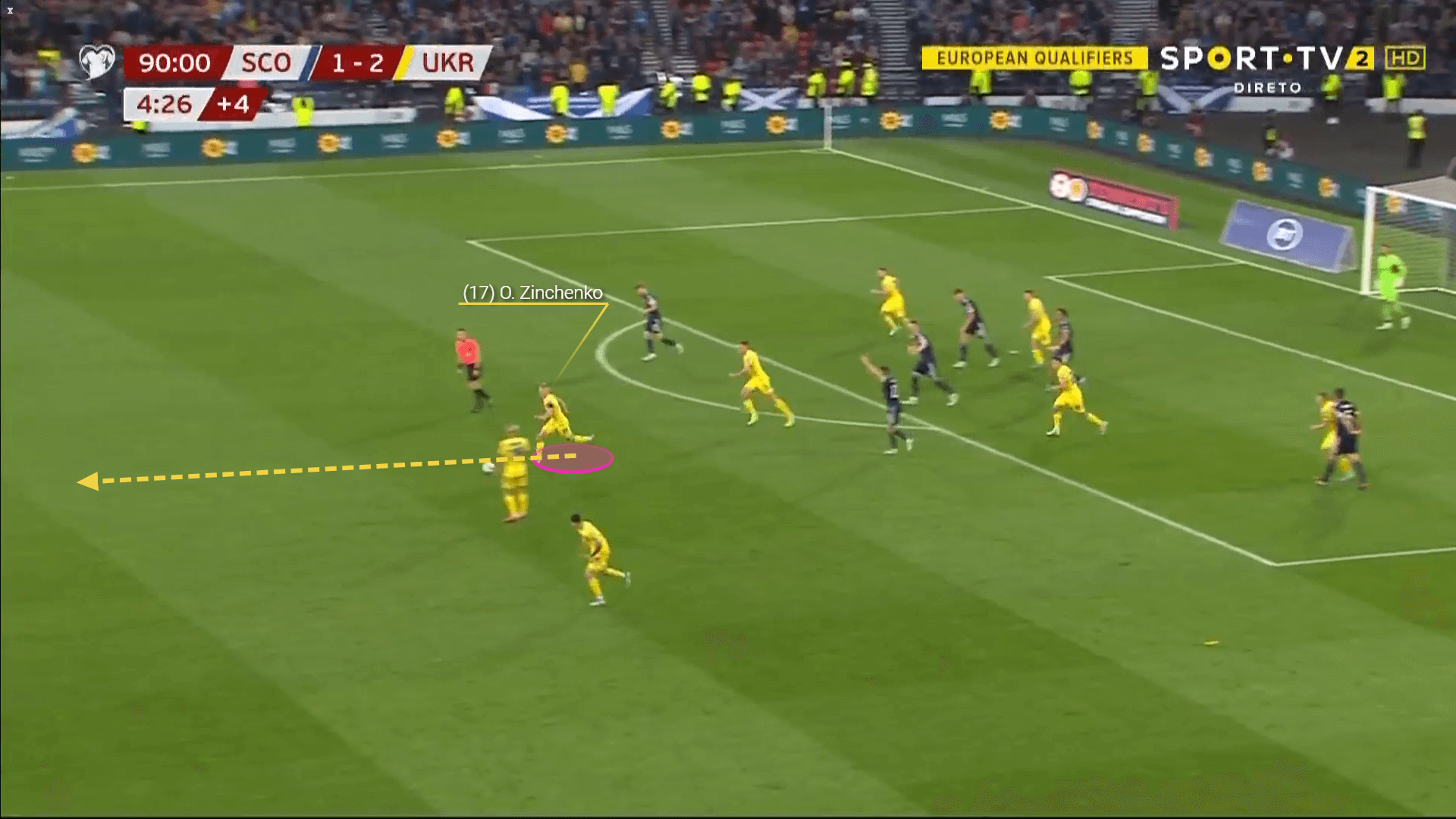
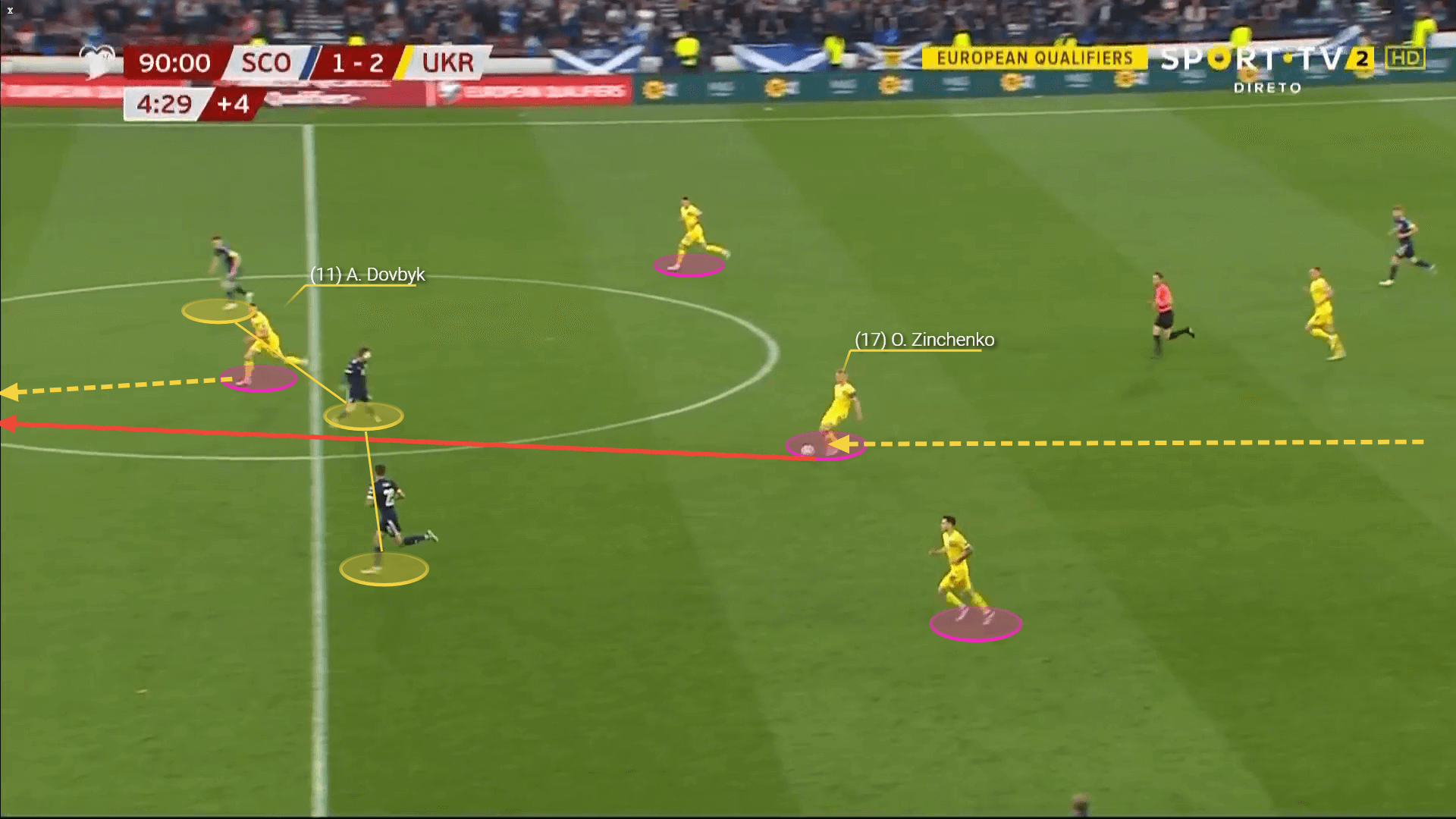
Surprisingly, he is more successful in his defensive duels when playing centrally, rather than when being in the left-back position, although most of his defensive numbers are similar in both roles.
How can Arteta use him?
Arteta might achieve his goal of being tactically unpredictable this season, and this is underlined by the new additions to the team. While last season, he most frequently set the team up in a 4-2-3-1, with the likes of Zinchenko, Jesus and Vieira, his team can be much more flexible not only in terms of formations but also when it comes to the players being interchangeable.
His passion for versatile players brought the Ukrainian to Emirates Stadium and he now has more options for certain positions, making the team much more competitive and safer in case of injuries.
It is difficult to predict whether the manager will use Zinchenko as a wide player or centrally. Playing him on the left would provide much more security considering Kieran Tierney’s frequent absences and Nuno Tavares’ unconvincing displays. It could bring much more edge to the Arsenal attack, by simply giving players like Martinelli more freedom to cut inside and provide a direct threat. Also, he provides much more options in ball progression, thanks to his passing abilities. Tierney’s 80.4% pass completion limits the team’s creativity in their build-up.
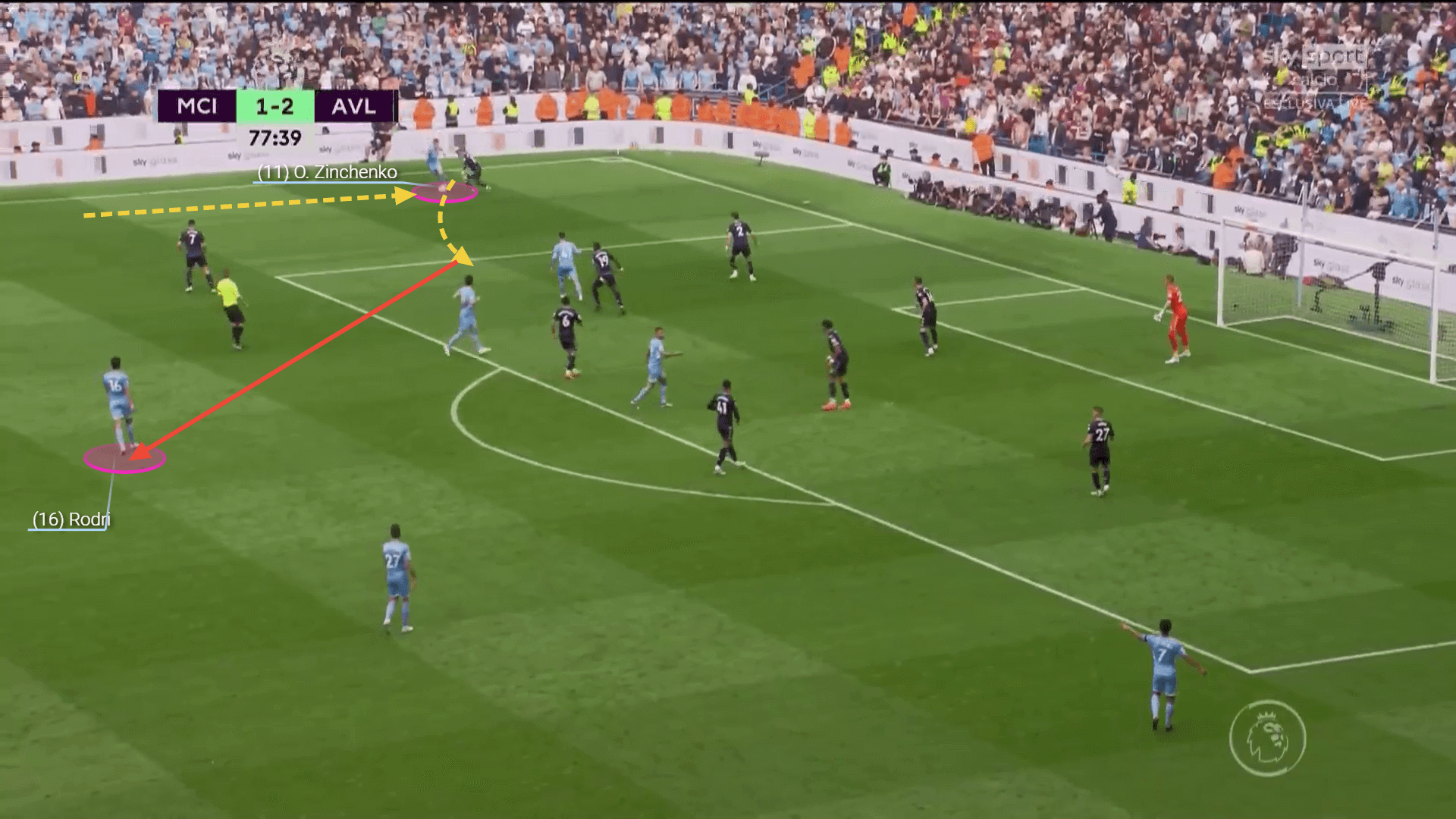
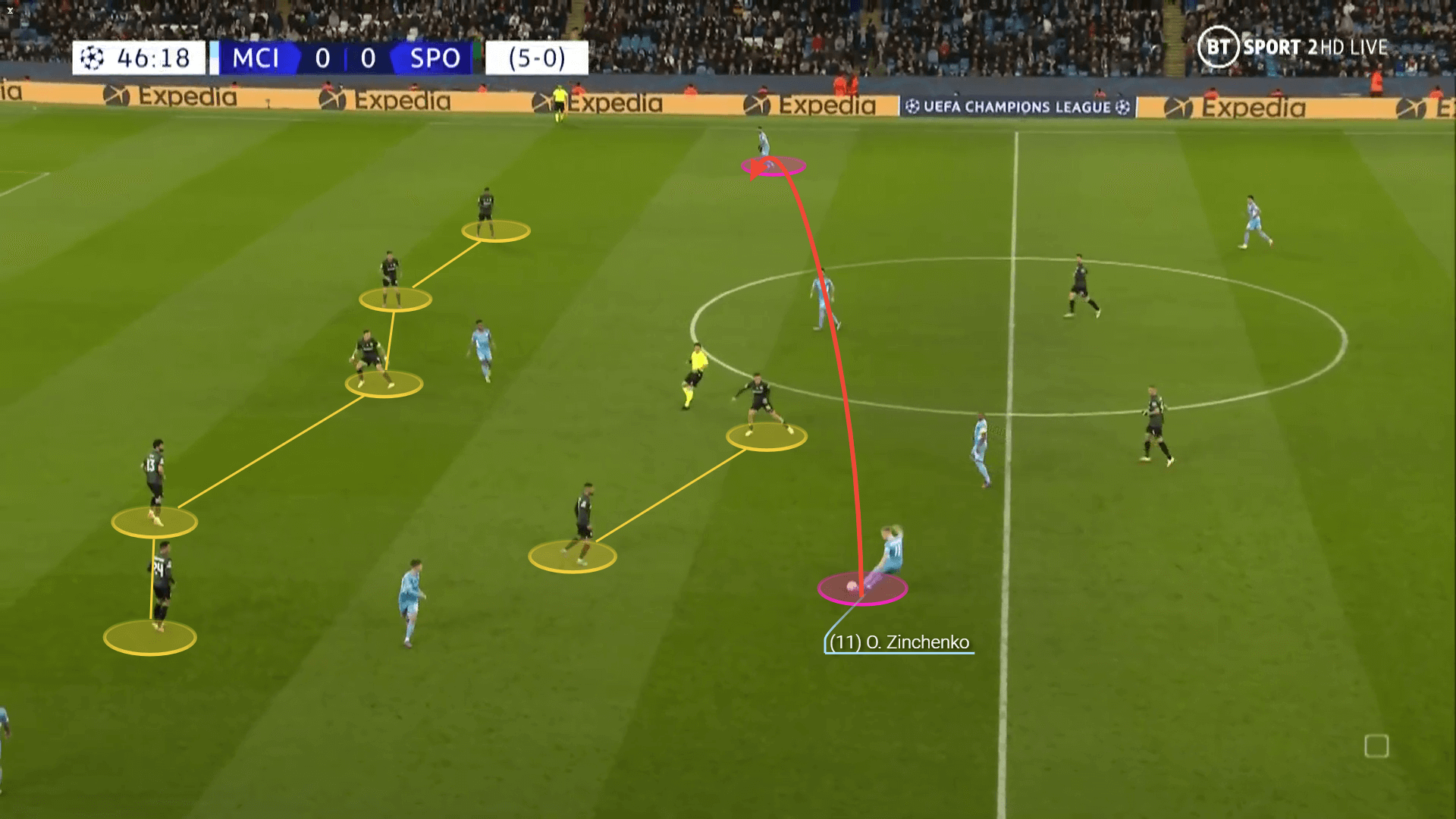
The Spaniard could also improve his midfield by deploying him as a No. 8, so he can help with transitions and allow more flexibility in midfield with Granit Xhaka and Thomas Partey having more freedom to move up and down the pitch. This would require him to use a midfield three, though.
Conclusion
As our analysis shows, Zinchenko can bring a lot of value to the current Arsenal squad and the versatility he provides will be much needed for Arteta’s future plans of turning the team into a title challenger.






Comments